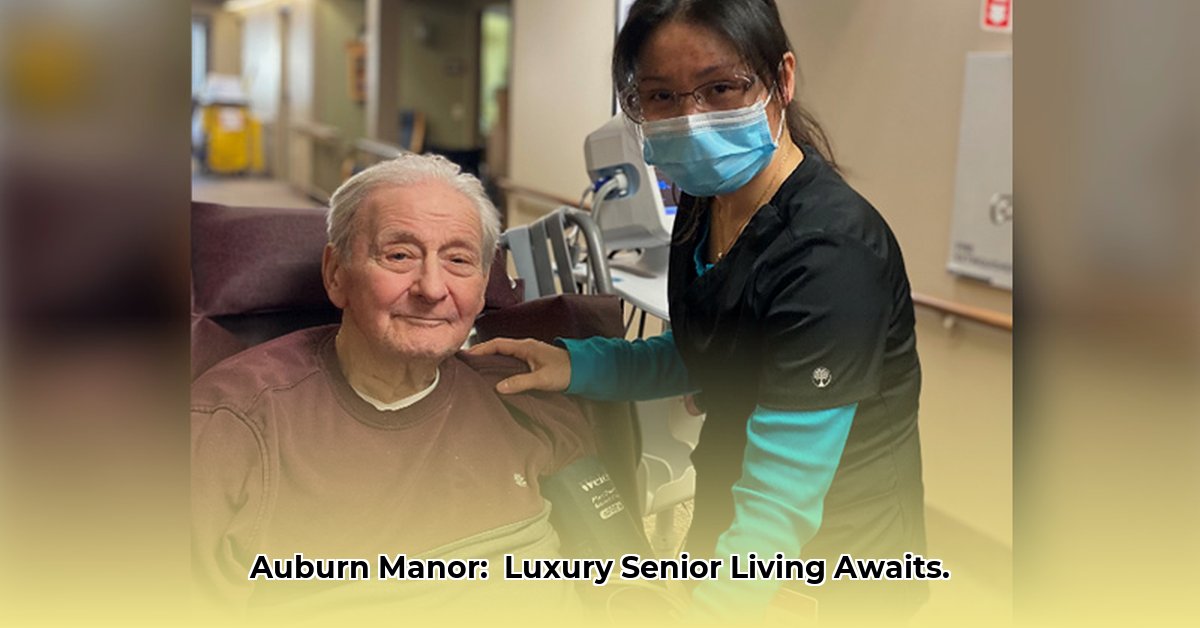
Auburn Manor Chaska MN: A Comprehensive Overview of Senior Living
Auburn Manor in Chaska, Minnesota, provides a range of services designed to support seniors. More than just a care facility, it strives to create a comfortable and engaging home environment. For more senior living options, consider visiting other senior living options. This article offers a balanced look at its strengths, areas for improvement, and actionable steps for stakeholders.
Services and Amenities: A Supportive Environment
Residents receive 24/7 nursing care, ensuring readily available assistance. The facility offers a diverse activity calendar, including social events and workshops, promoting physical and mental engagement. Customized meal plans cater to individual needs, and physical, occupational, and speech therapies are available. Short-term rehabilitation programs, complete with discharge planning, are also offered. Personalizable rooms and private outdoor spaces enhance independence and comfort, fostering a cozy and participatory atmosphere for residents.
A Sense of Community: Fostering Belonging
Auburn Manor is more than a building; it's a close-knit community. Its location within the Auburn Homes & Services campus allows seamless transitions between care levels, reducing stress for residents and families. This integrated system creates continuity and security, fostering a strong sense of belonging. This integrated approach is a significant advantage, minimizing the anxiety often associated with care transitions.
Performance and Outcomes: A Balanced Assessment
While Auburn Manor's family-like atmosphere is a major asset, objective performance data reveals areas for improvement. The emergency room visit rate for short-term rehab patients slightly exceeds state and national averages. Similarly, hospitalization rates due to infections show a marginal increase compared to the state average. However, the rate of successful discharges to home after rehabilitation is on par with national benchmarks. This mixed performance profile highlights the need for targeted improvements while acknowledging the facility's many strengths. This is a common finding in healthcare, indicating opportunities for focused enhancement.
Opportunities for Enhancement: Continuous Improvement Initiatives
Auburn Manor is actively pursuing improvements. These focus on preventative care, including proactive health monitoring and interventions to reduce emergency room visits. Strengthening infection control protocols through advanced techniques and staff training are also key priorities. Optimizing rehabilitation strategies to maximize successful returns home is another area of concentrated effort. These initiatives reflect a commitment to quality improvement and achieving optimal resident outcomes.
Actionable Steps for Improved Outcomes: A Collaborative Approach
Auburn Manor's continuous improvement requires collaboration among various stakeholders. The following outlines short-term (0-1 year) and long-term (3-5 years) goals:
1. Auburn Manor Management: Implement enhanced patient monitoring systems and refine infection control procedures based on best practices. Invest in cutting-edge patient care technology and establish a continuous quality improvement program. Foster strong partnerships with local healthcare providers.
2. Residents & Families: Maintain open communication channels, actively participate in care planning sessions, and explore opportunities for increased resident involvement in care planning and health education.
3. Regulatory Bodies: Maintain transparent record-keeping and promptly address inspection findings. Actively engage in industry best practices and research to ensure compliance and continual improvement.
4. Insurance Providers: Openly communicate resident progress and outcomes, providing clear reporting. Collaborate on value-based care models tying reimbursement to quality metrics and successful resident outcomes.
Making an Informed Decision: Your Personalized Journey
Choosing a senior care facility is a personal decision. Consider services offered, the community atmosphere, personalized care, and areas for potential improvement. Schedule a visit, speak with residents and staff, and ask detailed questions. This firsthand assessment will inform your decision and help you find a place where your loved one can thrive.
Reducing Emergency Room Visits: A Proactive Approach
This section explores strategies to minimize emergency room visits in skilled nursing facilities. The key takeaways are:
- Proactive Primary Care: Early detection and intervention are crucial.
- Patient & Family Education: Empowering residents and families through education leads to better choices.
- Alternative Care Options: Telehealth and in-house care reduce reliance on emergency rooms.
- Data-Driven Strategies: Analyzing data allows for targeted interventions.
- Collaboration: Communication between healthcare providers is key to success.
Auburn Manor's commitment to these strategies contributes to improved resident outcomes and reduces unnecessary emergency room visits. This proactive healthcare ecosystem enhances the overall quality of life for residents.